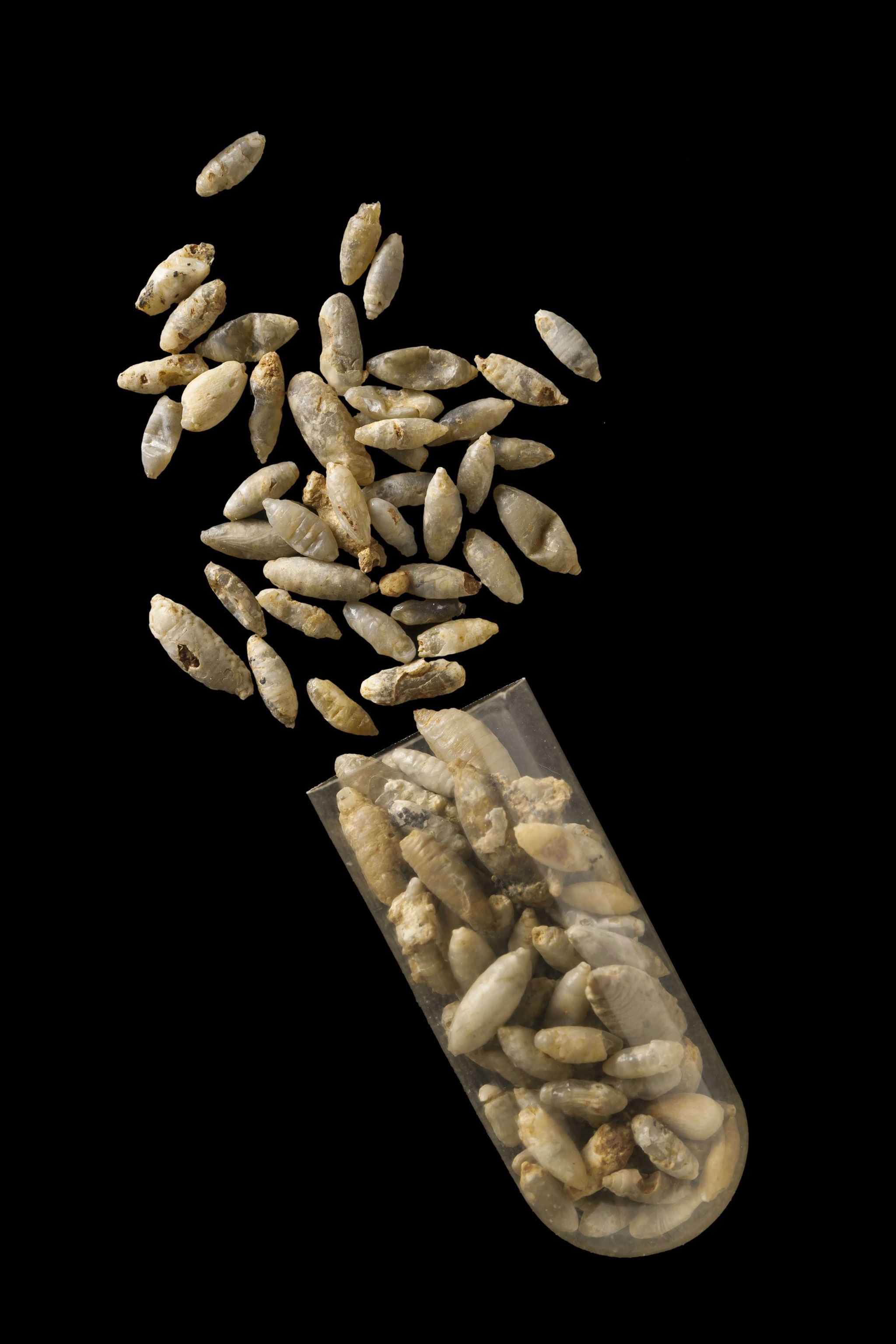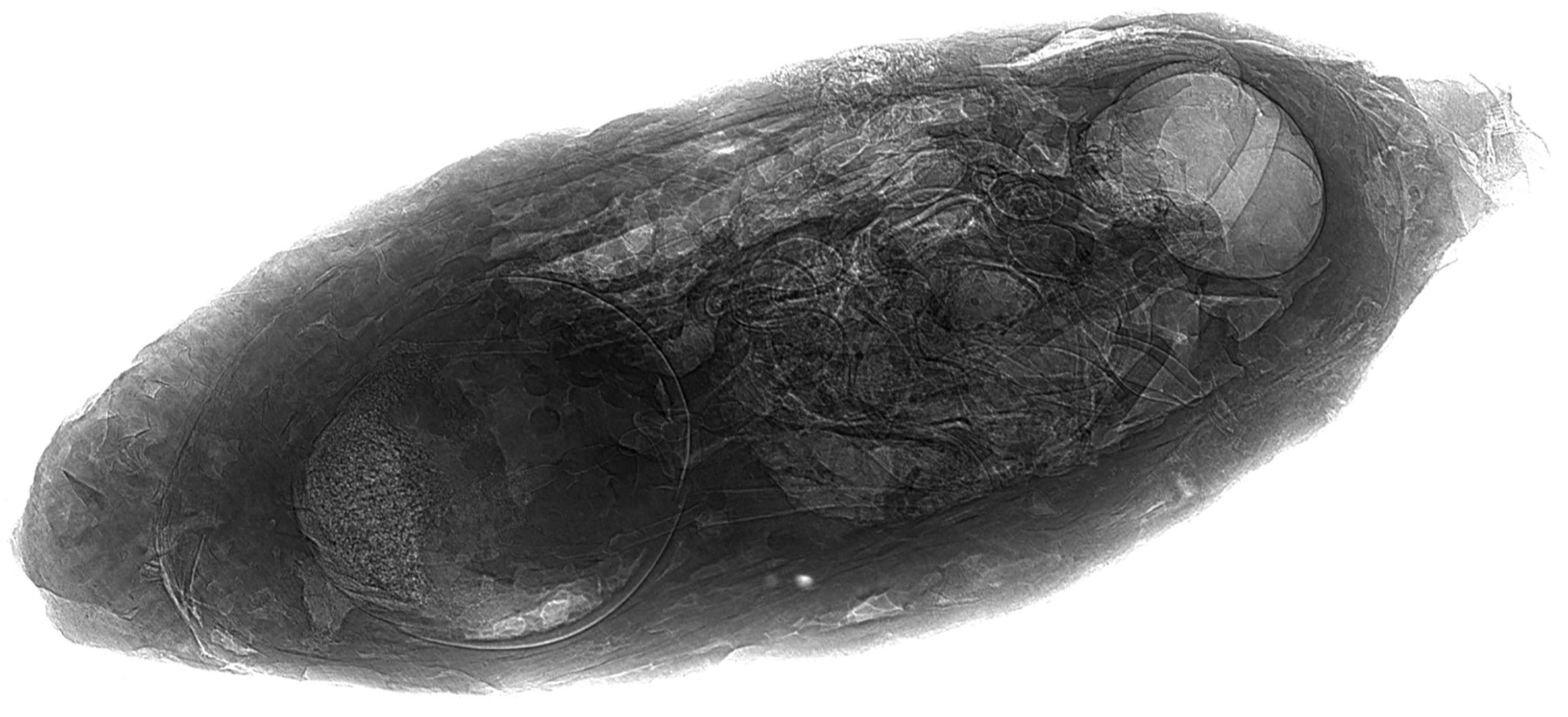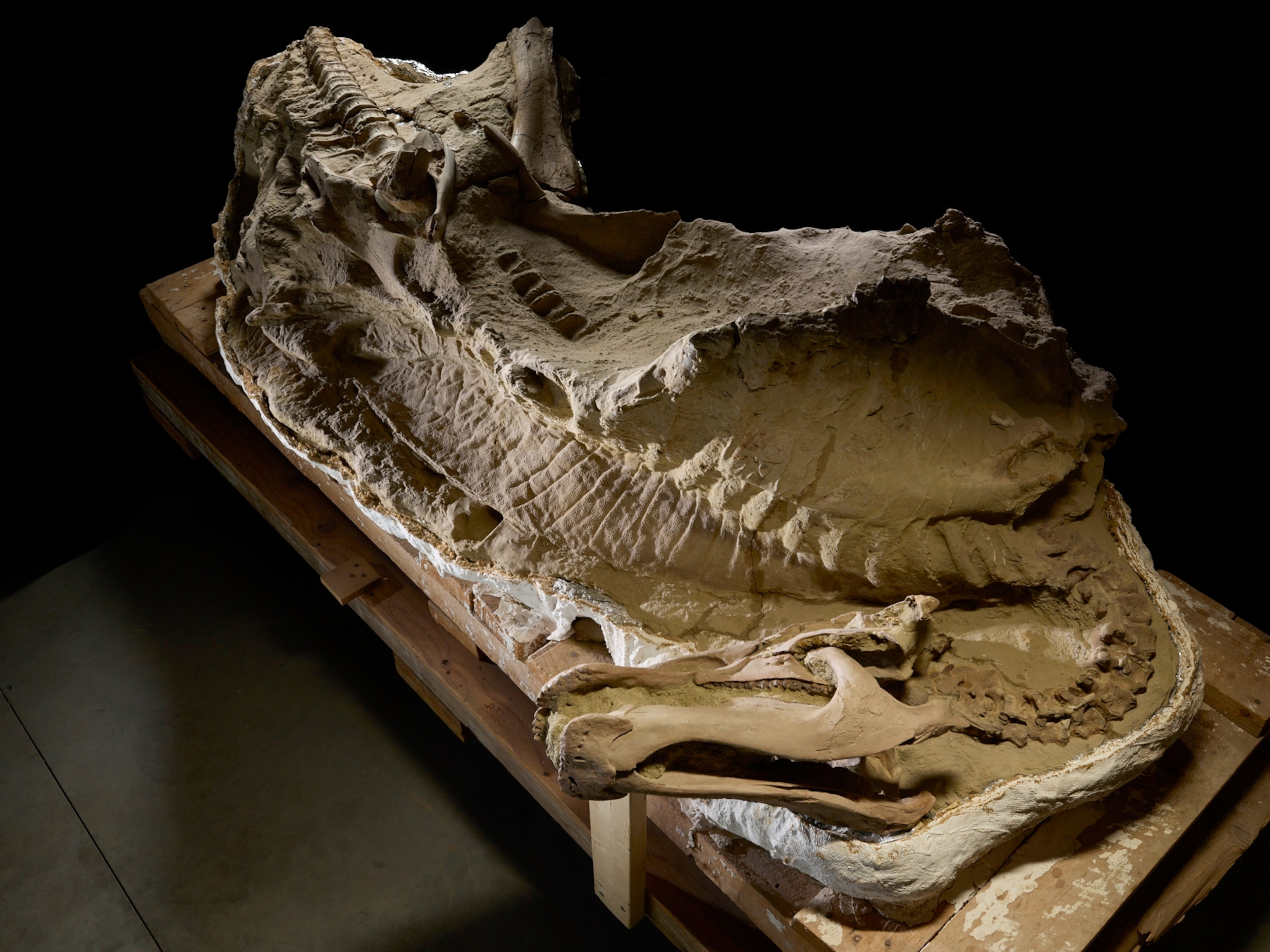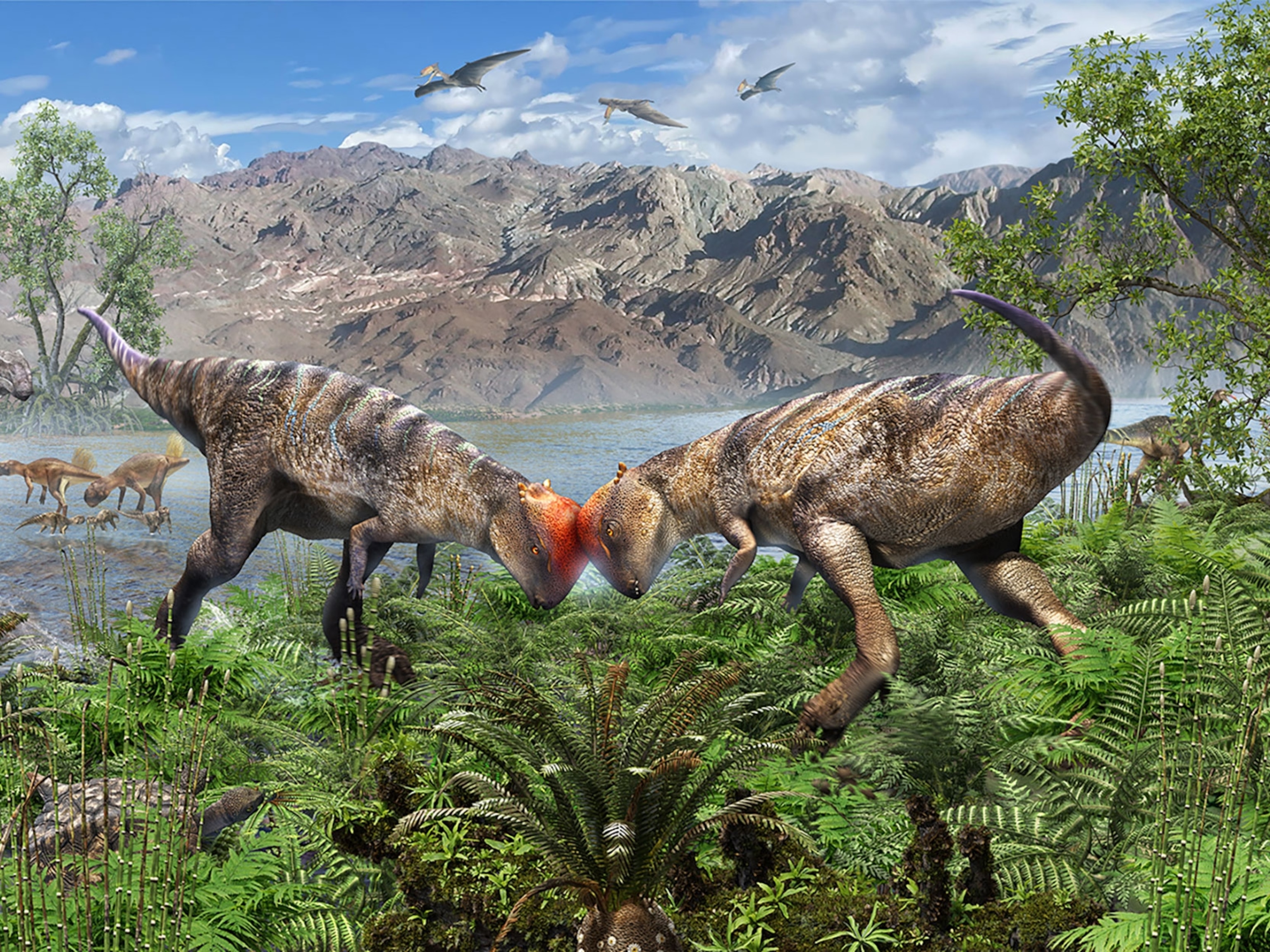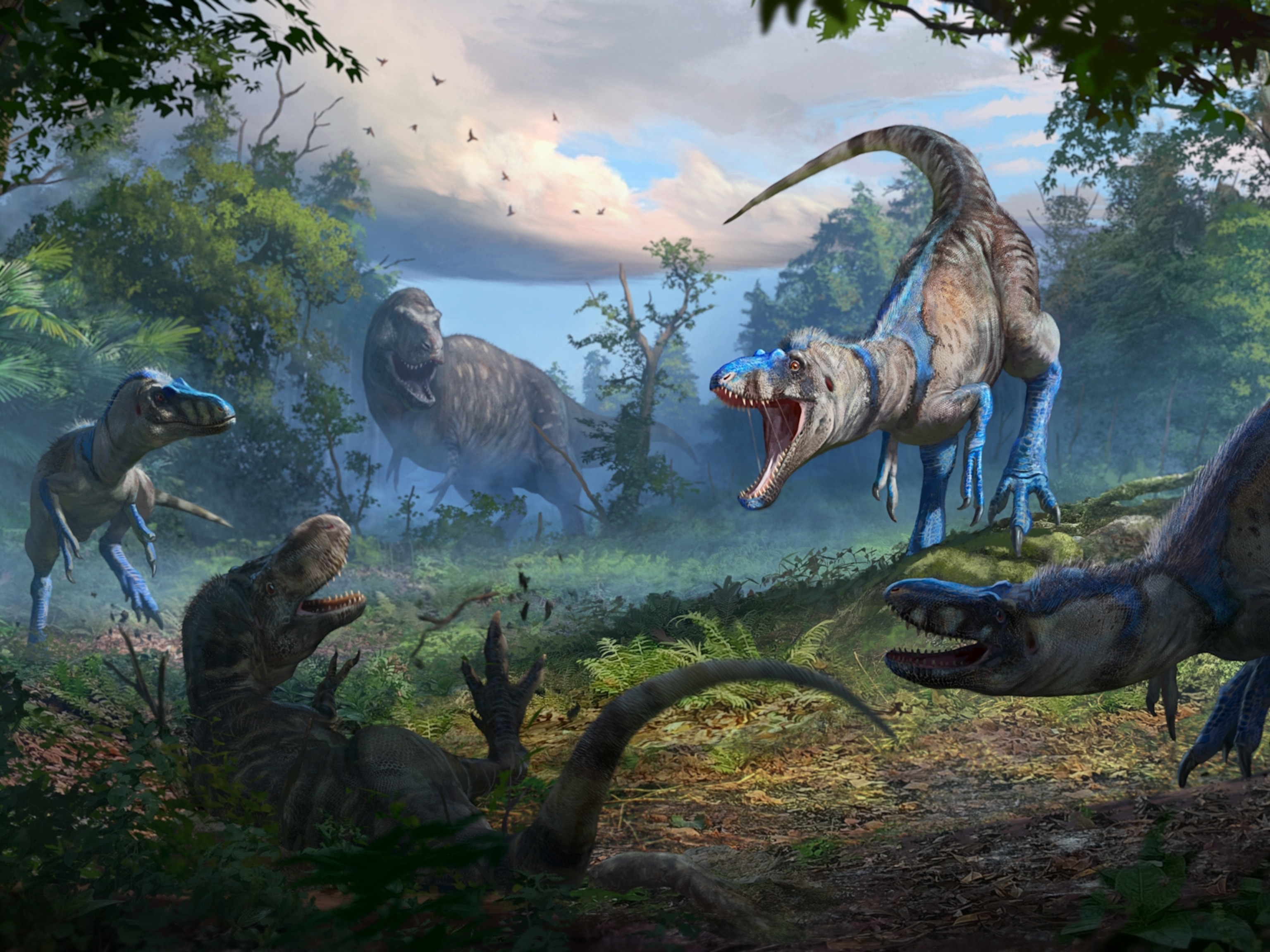Some 35 million years ago in what is now France, hundreds of maggots munched their way through decaying corpses. When they had had their fill, each one wrapped itself into a tight little bundle and waited to transform into a fly.
Then along came the parasitic wasps.
Now, in a rare example of a fossil found inside a fossil, researchers have unveiled the stunningly preserved remains of 55 ancient fly pupae that house parasitic wasp invaders. Using advanced technology to peer inside the rice-size fossils without damaging them, the team created images of the wasps in breathtaking detail—down to their fragile wings and the hairs on their backs.
The haul includes four wasp species that were previously unknown to science. And while some were quite similar to modern parasitic wasps, others differed so much that they belong to two whole new genera, the team reports this week in the journal Nature.
Study leader Thomas van de Kamp, an entomologist at the Karlsruhe Institute of Technology, dubbed one new genus Xenomorphia in honor of the slick, bug-like bodies and parasitic lifestyles of the nightmarish monsters in the Alien movies. One of the wasps even bears the species name Xenomorphia resurrecta—though van de Kamp claims this particular moniker comes from its digital resurrection rather than the movie franchise.
Staring Into Alien Eyes
Previously, van de Kamp had been studying the internal anatomy of ancient beetles, but paleontologist and study coauthor Achim Schwermann suggested he try scanning some ancient fly pupae in search of possible invaders.
In 1944, Swiss entomologist Eduard Handschin had noticed a parasite-like silhouette in one fly pupa from the same location in France. It was the only previous record of a parasitic wasp in the fossil record. So van de Kamp and his team decided to take a high-tech look into several of the ancient pupae.
“We didn't really expect to find these parasites inside,” says van de Kamp. Indeed, the first nine samples that he scanned were empty. “I was already a little bit bored,” he says. But when he scanned the tenth sample, he found himself staring into the dimpled eyes of a parasite.
The parasitic wasps lay curled in their stolen pupae homes, antennae tucked down along their sides and hairs standing up on their backs. “It was absolutely clear,” he says. “It really looked me into the eye through the screen.”
Excited about the find, the team collected all the fossilized pupae from the region they could find for analysis, gathering 1,510 of the tiny fossils from the collections of the Natural History Museum of Basel and the Swedish Museum of Natural History.
Past Parasites
The team thinks the nested fossils formed when ancient wasps pierced the maggots' pupae and injected their own eggs, which then hatched and began eating the flies-to-be. Fully grown but still cocooned, the adult wasps spread their wings in anticipation of breaking free to mate and start the cycle anew.
But then a heavy downpour or some other watery death engulfed them. The phosphorus from the carcass bones likely dissolved, preserving the gruesome vignette.
Many of the wasps had their wings stretched wide, says van de Kamp, which is commonly seen in modern parasitic wasps as they wait to break free of their stolen pupae in synchrony. But, he notes, they aren't sure if all 1,510 pupae were fossilized at once or in a few successive waves.
This isn't the first fossil parasite ever found. Scientists previously discovered fossilized nematodes, tongue worms, parasitic flies, and more. But it's exceedingly rare to find an ancient parasite still inside its host, notes George Poinar, a paleobiologist at Oregon State University who was not involved in the study.
Most evidence of prehistoric parasitism has been captured in amber. Like tiny time capsules, these lumps of fossilized tree resin can preserve ancient scenes in stunning detail. Take, for example, Poinar's recent study in Historical Biology documenting an amber-encased isopod, complete with a parasitic fly emerging from its back.
But amber fossils are usually limited to arboreal critters that clambered about trees and were occasionally engulfed with oozing resin. Because of this, van de Kamp says, the parasite fossil record is slightly biased toward tree dwellers, making the latest discoveries all the more valuable.
Terrific Technology Tricks
Poinar adds that the technology and techniques used in this study could also allow scientists to reexamine some past finds for further evidence of parasitism.
“I can find pupae in the amber,” Poinar says. “But I can't look into the pupae to see what's developing in there.” At least, not until now.
For the fly pupae, the researchers used x-rays to create ultra-thin cross sections of each fossil without destroying the prize finds, using what's known as x-ray microtomography. They then assembled the sections into an impressively detailed three-dimensional model. Applying this method to existing fossils—including those in amber—opens up new possibilities for discovery.
Sara Weinstein, a parasite ecologist at the University of California, Santa Barbara, also praises the study and its methods. As she puts it: “This is an exciting time to be able to be doing science.”

